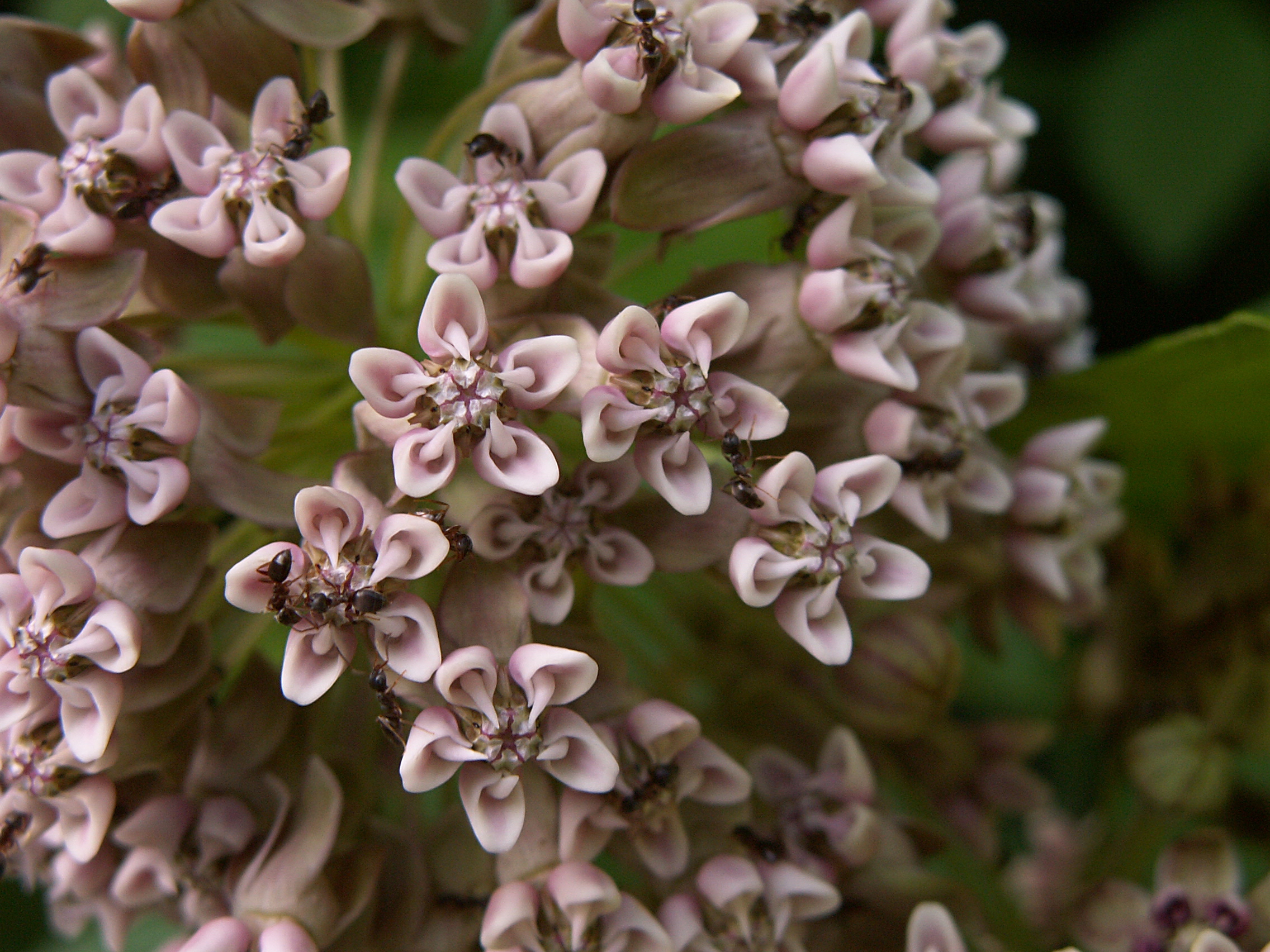This distinctively odd-looking plant is a common sight along the road or at the edges of fields; this one grew at the edge of the woods in Mount Lebanon, where it was blooming in late June. The plants stand straight and tall; the flowers form umbels in almost perfect spheres. From a distance their color resembles the color that used to be called “flesh” in children’s crayon boxes. The heady scent of Milkweed blossoms attracts butterflies and bees, but also—as we see in the picture above—legions of little ants.
Milkweeds and their allies were traditionally placed in the Milkweed family, Asclepiaceae; but modern botanists make that family a subfamily (Asclepiadoideae) of the Dogbane family, Apocynaceae. The species name syriaca comes from a pre-Linnaean botanist who confused this species with one from the Near East.
Gray describes the genus and the species:
ASCLEPIAS [Tourn.] L. MILKWEED. SILKWEED. Calyx persistent; divisions small, reflexed. Corolla deeply 5-parted; divisions valvate in bud, deciduous. Crown of 5 hooded bodies seated on the tube of stamens, each containing an incurved horn. Stamens 5, inserted on the base of the corolla; filaments united into a tube which incloses the pistil; anthers adherent to the stigma, each with 2 vertical cells, tipped with a membranaeeons appendage, each cell containing a flattened pear-shaped and waxy pollen-mass; the two contiguous pollen-masses of adjacent anthers, forming pairs which hang by a slender prolongation of their summits from 5 cloven glands that grow on the angles of the stigma (extricated from the cells by insects, and directing copious pollen-tubes into the point where the stigma joins the apex of the style). Ovaries 2, tapering into very short styles; the large depressed 5-angled fleshy stigmatic disk common to the two. Follicles 2, one of them often abortive, soft, ovoid or lanceolate. Seeds anatropous, flat, margined, bearing a tuft of long silky hairs (coma) at the hilum, downwardly imbricated all over the large placenta, which separates from the suture at maturity. Embryo large, with broad foliaceous cotyledons in thin albumen. Perennial herbs; peduncles terminal or lateral and between the usually opposite petioles, bearing simple many-flowered umbels, in summer. (The Greek name of Aesculapius, to whom the genus is dedicated.)








